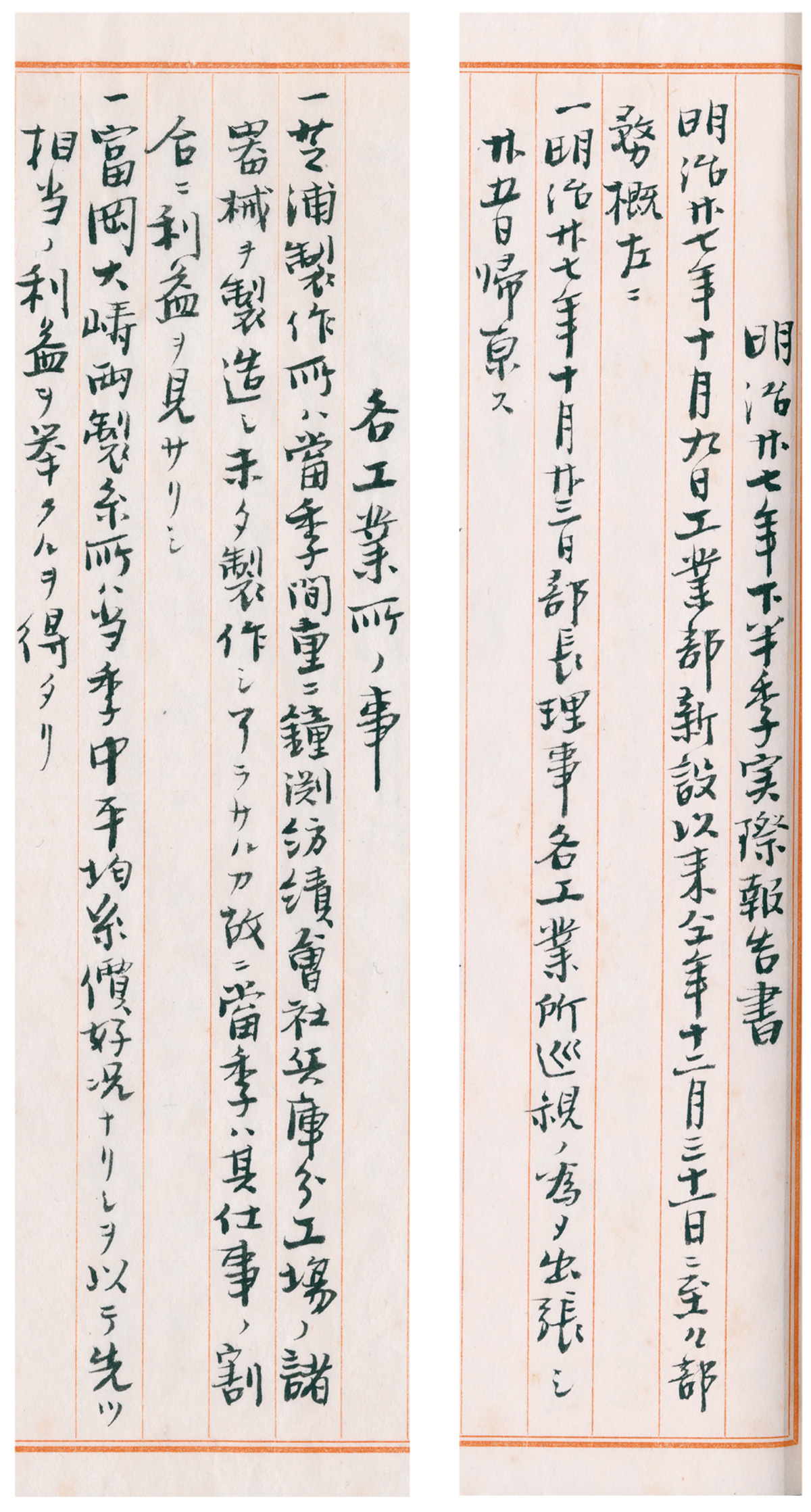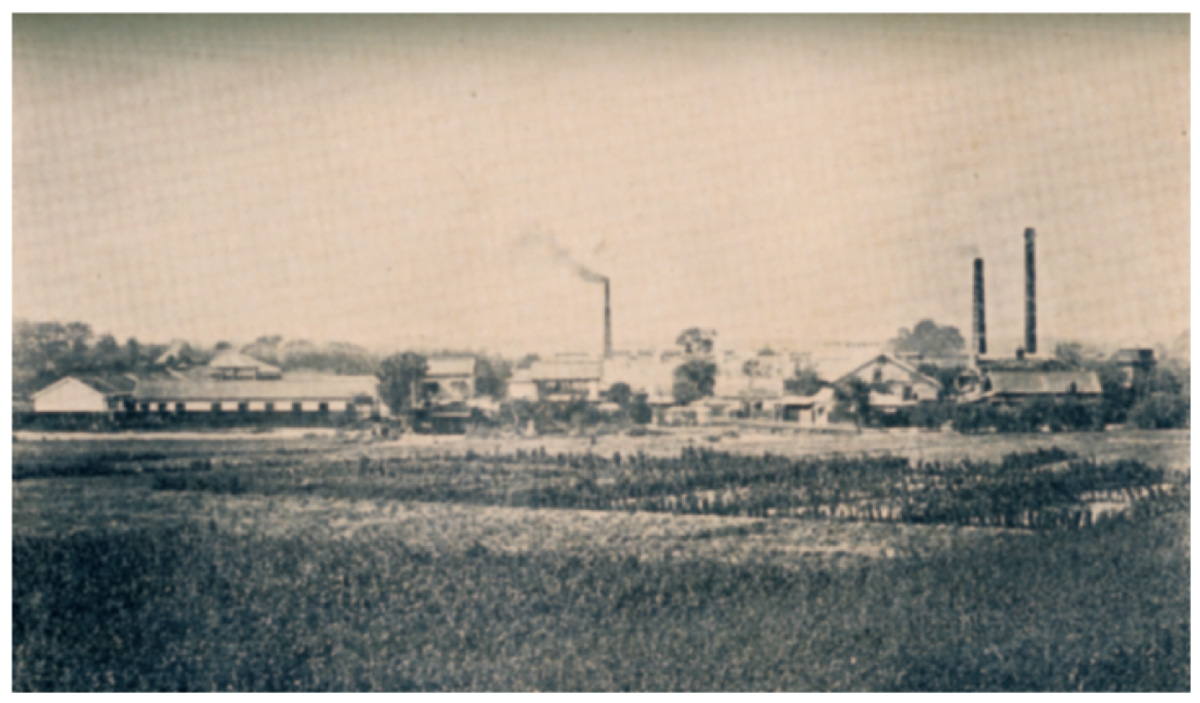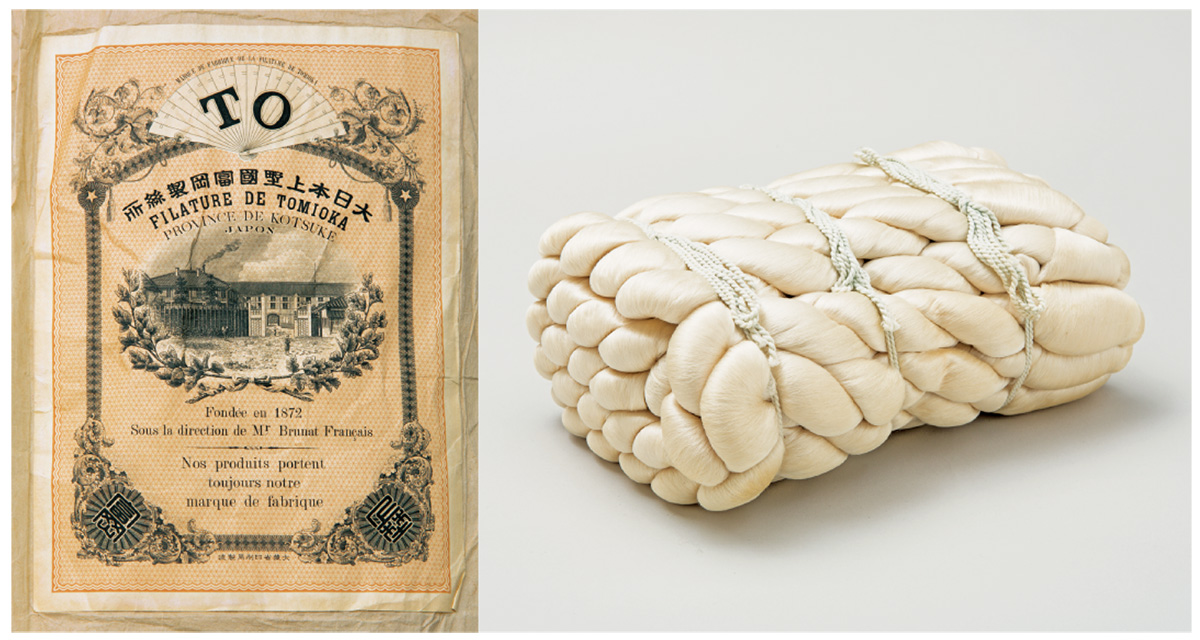36 The Path to Industrialization and Setbacks

Nakamigawa’s Path to Industrialization
In November 1893, Mitsui-gumi was renamed the Motokata. Nakamigawa Hikojiro (→29), executive director at Mitsui Bank, also assumed the executive position of Motokata committee member, and along with Masuda Takashi, brought considerable authority to exerting leadership both within and outside of Mitsui. Nakamigawa acquired silk-reeling, spinning and machinery factories through the sale of government-run enterprises and foreclosures. In addition, based on his belief that “deposits do not belong to the bank, and are essentially debt,” he actively invested in industrial firms, backed by the financial strength of Mitsui Bank.
A New Industrial Department
Under the leadership of Nakamigawa, in October 1894 Mitsui decided to establish a new Industrial Department, purchasing factories belonging to its other companies and managing them collectively. From Mitsui Bank they took over the Tomioka and Oshima silk mills and Shibaura Seisakusho (the present-day Toshiba), and from Mitsui Gofukuten (→26) the Shinmachi spinning mill. The following year, Mitsui acquired the assets of Maebashi Spinning Co., Ltd. and established the Maebashi spinning mill. These factories came under Mitsui through a variety of circumstances, the history of which is briefly described below.
Tomioka Silk Mill Began operation in 1872 as a model factory for the government. Sold off to Mitsui in 1893, coming under the administration of Mitsui Bank.
Shinmachi Spinning Mill A government-run model factory established in Shinmachi (now Takasaki City), Gunma Prefecture in 1877. Acquired by Mitsukoshi Tokuemon (→26) in 1887, placing it under the management of Mitsui Gofukuten (→Fig. 36b).
Shibaura Seisakusho A machinery factory acquired and renamed by Mitsui Bank in the process of restructuring the accumulated debts of Tanaka Seisakusho.
Oshima Silk Mill The mill’s predecessor was Oshima Shosha, founded in Tochigi Prefecture by Edo merchant Kawamura Uso. The 33rd National Bank, established by Kawamura’s son Tsutae, went bankrupt in 1892, and the mill came under the management of Mitsui Bank through foreclosure before becoming the Oshima silk mill.
Maebashi Spinning Mill This factory was built in 1881 by retainers of the former Maebashi domain. Incorporated in 1894, it came under Mitsui the following year.
Through investments and loans from Mitsui Bank, Nakamigawa also gained control over management of Kanegafuchi Spinning (later Kanebo), Oji Paper and others.
Setbacks for the Industrial Department
Both the Tomioka and Oshima silk mills were performing well (→Fig. 36a). A consensus was formed among the leadership of Mitsui that the silk manufacturing business was promising, which led to the establishment of silk mills in Nagoya and Mie in 1895. The following year, however, exports of silk from Japan dropped drastically, and those newly established silk mills faced continuous losses. Performance worsened at Tomioka and Oshima as well, and operations at Shibaura Seisakusho also struggled. Amid the industrial sector’s poor performance, the Motokata Industrial Department was abolished at the end of 1898. The four silk mills and the two spinning mills were turned over to Mitsui Gofukuten, while Mitsui Mining took over Shibaura Seisakusho. In addition, instability continued to plague operations at Oji Paper and Kanegafuchi Spinning, and the business ventures into which Nakamigawa had invested his efforts came to be regarded as failures.
Criticisms of Industrialization
Around this time, Mitsui Mining and Mitsui Bussan. both had significant demand for capital, making it difficult for Mitsui Bank to continue investing funds in the industrial companies. As a result, when the industrial sector fell into a slump, Nakamigawa’s hasty push for a path to industrialization was exposed to powerful criticism. The most strident opposition to Nakamigawa came from Masuda Takashi. In addition, his relationship with Mitsui family advisor Inoue Kaoru deteriorated, and Nakamigawa gradually lost his influence. It is said that his actions-including his relentless approach to government officials in dealing with the Bank’s bad debts, refusal of loans to the family of Duke Mori, which had close ties to Inoue, and the Kaijima family in Kyushu, and his opposition to the establishment of the Mitsui’s House Constitution (→37)-were what angered Inoue.
Death of Nakamigawa
Finding himself isolated within Mitsui, in the fall of 1899, Nakamigawa developed kidney disease and passed away in a state of despair two years later, in October of 1901. He was just 47 years old. After his death, Masuda Takashi took over leadership and attempted to correct Mitsui’s path to industrialization. The silk mills, including Tomioka and Oshima, were sold off to Hara & Co. (Hara Tomitaro). Shibaura Seisakusho was also spun off as an independent corporation, while a portion of the bank-owned shares in Kanegafuchi Spinning, Oji Paper and others were also sold off and those enterprises positioned as peripheral businesses. Masuda aspired to build Mitsui around the three main pillars of banking, trading and mining.

In November 1893, Mitsui-gumi changed its name to Motokata, and in October of the following year established a new Industrial Department as part of its business reforms. This report is a summary of business performance two months following the launch of the new department, and includes a balance sheet, a profit and loss statement, an inventory of assets and other information.
Description
One can learn from the section covering each industrial facility that Shibaura Seisakusho had just begun manufacturing machinery for the Hyogo branch factory of Kanegafuchi Spinning and was not yet turning a profit, and that initially, both the Tomioka and Oshima silk mills had performed well. It was Nakamigawa Hikojiro, who pushed for fundamental reform of the Mitsui Bank and enthusiastically promoted the development of the industrial sector.

View of the mill around 1898

Raw silk from the Mitsui Gofukuten era. As of the end of 1898, the Tomioka silk mill was producing five types of raw silk, primarily for export to the U.S., including bessei tobikiri-jo (special extra fine), tobikiri-jo (extra fine), tobikiri (fine), itto (first grade), and togai (ungraded). The raw silk in the Mitsui Bunko collection is tobikiri-jo. Today, even more than 100 years later, the silk retains its original luster.
